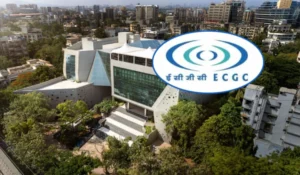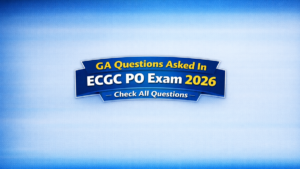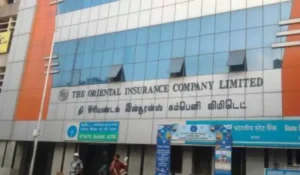Reasoning is a game of wits and presence of mind! Yes, it is true and it might seem as the greatest of the challenge after English Section’s surprises but yet this one can easily be dealt with. You just need correct practice and hardwire your brain to quickly make decisions of what to attempt and what to leave. And for same we are providing you questions on Night Class Reasoning Question. To Practice more with these new pattern Reasoning Question for RRB PO Exam 2017.
Directions (1-5): These questions are based on the following information. Read the information carefully and answer the questions given below.
Seven friends, viz Sonu, Monu, Deepu, Siddhu, Anuj, Namit and Tinku are pursuing their M.Phil in different subjects—Maths, History, Political Science, Chemistry, Economic, Accounts and Geography but not necessarily in the same order. They study in three different universities, viz P, Q and S. At least two friends study in the same university. Siddhu is studying Political Science in university P. The one who is studying History is not from university S. Tinku is studying Geography in university Q with only Monu. Sonu is not studying Economics and is not from university P. Namit is studying Accounts and is not from university P. Anuj is studying Chemistry but not from university P. No one studies Maths or Economics in University P.
Siddhu is studying Political Science in university P. The one who is studying History is not from university S. Tinku is studying Geography in university Q with only Monu. Sonu is not studying Economics and is not from university P. Namit is studying Accounts and is not from university P. Anuj is studying Chemistry but not from university P. No one studies Maths or Economics in university P.
Siddhu is studying Political Science in university P. The one who is studying History is not from university S. Tinku is studying Geography in university Q with only Monu. Sonu is not studying Economics and is not from university P. Namit is studying Accounts and is not from university P. Anuj is studying Chemistry but not from university P. No one studies Maths or Economics in university P.
Q1. Which of the following represents the group that studies in university S?
(a) Siddhu, Monu
(b) Deepu, Namit, Anuj
(c) Sonu, Anuj
(d) Anuj, Namit, Sonu
(e) None of these
Q2. Deepu is studying in which of the following universities?
(a) P
(b) Q
(c) S
(d) Can’t be determined
(e) None of these
Q3. Which of the following combinations is true?
(a) Sonu—Economics—university S
(b) Monu—History—university Q
(c) Deepu—History—university S
(d) Anuj—Chemistry—university Q
(e) None of the above
Q4. Monu studies which subject in M.Phil?
(a) History
(b) Maths
(c) Economics
(d) Can’t be determined
(e) None of these
Q5. Who among the following is studying History in M.Phil?
(a) Monu
(b) Deepu
(c) Namit
(d) Sonu
(e) None of these
Directions (6-10): In the following questions, the symbols @, ©, %, δ and # are used with the following meaning as illustrated below.
‘P % Q’ means ‘P is not greater than Q’.
‘P δ Q’ means ‘P is neither greater than nor smaller than Q’.
‘P # Q’ means ‘P is neither greater than nor equal to Q’.
‘P © Q’ means ‘P is not smaller than Q’.
‘P @ Q’ means ‘P is neither smaller than nor equal to Q’.
Now, in each of the following questions assuming the given statements to be true, find which of the two Conclusions I and II given below them is/are definitely true?
Give answer
(a) If only Conclusion I is true
(b) If only Conclusion II is true
(c) If either Conclusion I or II is true
(d) If neither Conclusion I nor II is true
(e) If both Conclusion I and II are true
Q6. Statements: R © T, T @ M, M δ D
Conclusions:
I. D # T
II. M # T
Q7. Statements: B @ N, N % R, R © F
Conclusions:
I. B @ F
II. N # F
Q8. Statements: D # T, T @ R, R © M
Conclusions:
I. M # D
II. M # T
Q9. Statements: K δ H, H % F, F # J
Conclusions:
I. F © K
II. J © H
Q10. Statements: W @ G, N © G, N % V
Conclusions:
I. W @ N
II. V © G
Directions (11-13): Read the following information carefully and answer the questions which follow.
If ‘A × B’ means ‘A is father of B’.
If ‘A + B’ means ‘A is wife of B’.
If ‘A ÷ B’ means ‘A is daughter of B’.
If ‘A – B’ means ‘A is son of B’.
Q11. How is Q related to L in the expression ‘L ÷ M × O – P ÷ Q’?
(a) Granddaughter
(b) Niece
(c) Daughter-in-law
(d) Daughter
(e) Cannot be determined
Q12. What will come in the place of the question mark, to establish that O is the nephew of T in the expression ‘O ? R ÷ S × T’?
(a) +
(b) ×
(c) –
(d) ÷
(e) Either – or ÷
Q13. Which of the following relations are true based upon the relations given in the equation: ‘A – B × C + D – E’?
(a) C is mother of A
(b) E is wife of B
(c) D is brother of A
(d) E is mother-in-law of C
(e) None is true
Q14. How many such digits are there in the number 521468, remain unchanged after the digits are arranged in ascending order?
(a) None
(b) One
(c) Two
(d) Three
(e) More than three
Q15. B is sister of D, D is sister of M. M is brother of K. K is father of C. How is K related to B?
(a) Brother
(b) Sister
(c) Brother or Sister
(d) Data inadequate
(e) None of these





 ECGC PO Exam Analysis 2026, 11 January C...
ECGC PO Exam Analysis 2026, 11 January C...
 GA Questions Asked In ECGC PO Exam 2026,...
GA Questions Asked In ECGC PO Exam 2026,...
 OICL AO Exam Analysis 2026, 10 January S...
OICL AO Exam Analysis 2026, 10 January S...








